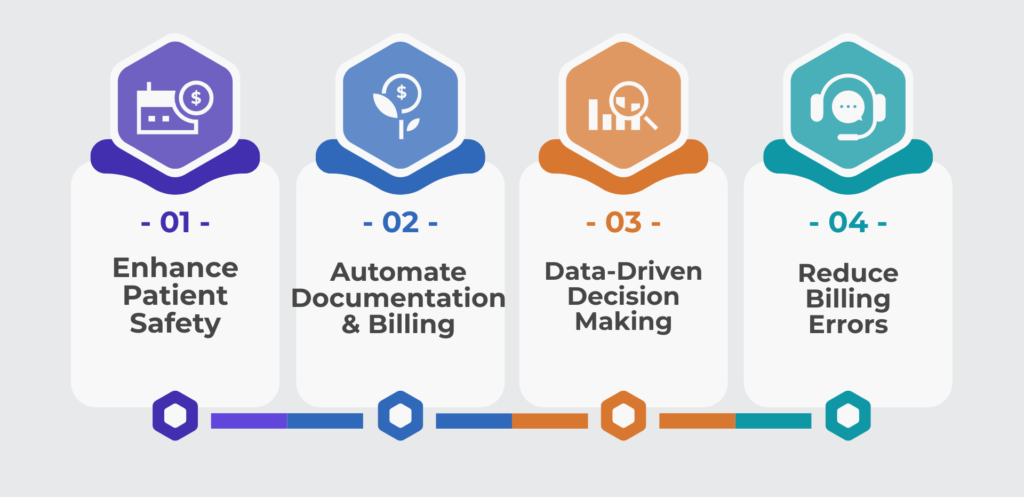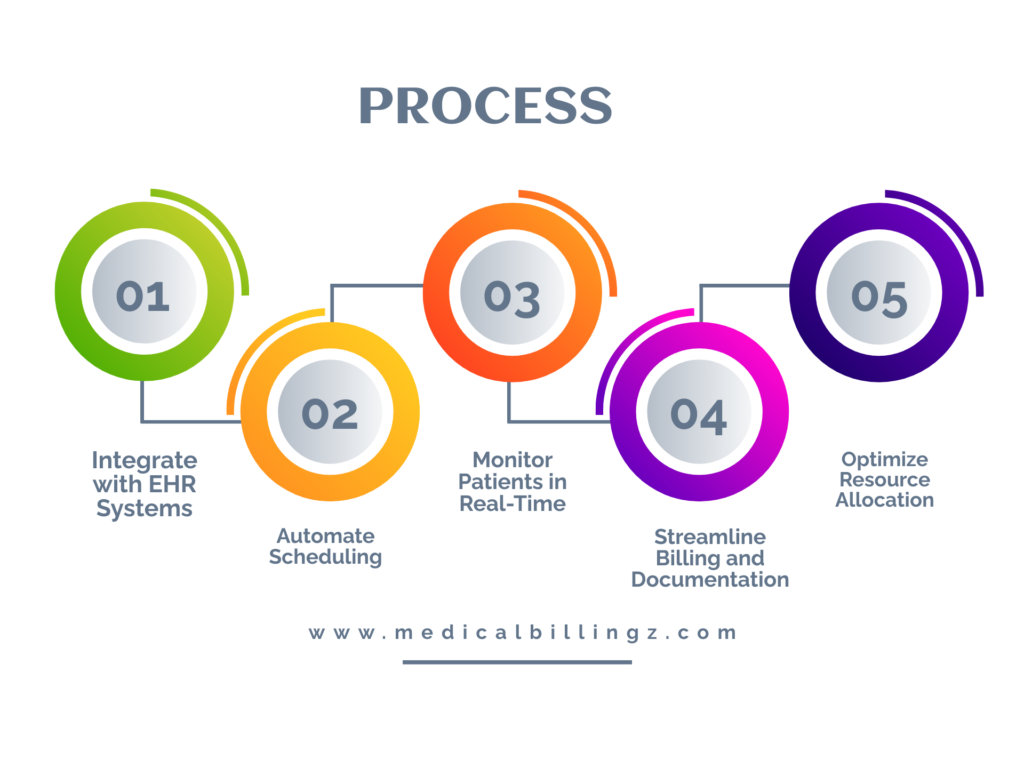Modern healthcare would not be possible without anesthetic, which makes surgeries and other procedures painless. Robust systems and procedures are necessary for the efficient management of anesthesia services in order to guarantee patient safety, maximize resources, and adhere to legal requirements.
Leading this effort are anesthesia management solutions, which provide instruments to improve and automate anesthesia practice in various healthcare settings. These solutions combine clinical, administrative, and financial procedures into a unified system to handle the complexities of anesthesia care.
The Value of Solutions for Anesthesia Management
Anesthesia plays a wide range of roles in modern medicine, from simple procedures to intricate surgeries. Effective administration is becoming more and more necessary as anesthetic procedures become more complex. In order to ensure compliance, automate documentation, and maximize resource allocation, anesthesia management solutions have been developed.
Patient Security and Handling
Patient safety is the main priority for any anesthesia service. By giving anesthesiologists access to real-time data and decision-making tools to help them provide the right kind of care, anesthesia management systems increase patient safety. By monitoring vital signs, adjusting medication dosages, and promptly attending to patient needs, these solutions help clinicians lower the risk of complications.
Moreover, a lot of anesthesia management systems have built-in alerts and warnings that inform medical professionals about possible patient hazards like allergic reactions or unusual vital signs. These systems help anesthesiologists make fast, well-informed decisions by combining patient data.
Effectiveness and Expense Control
Anesthesia management systems are intended to increase operational effectiveness as well as patient care. By streamlining administrative duties like scheduling, invoicing, and supply chain management, they improve the efficiency with which hospitals and surgery centers deploy their resources.
For instance, effective drug inventory control can stop waste, and automated billing systems enhance revenue cycle management by lowering errors. These solutions’ cost savings are essential for healthcare providers who are under increasing pressure to keep costs under control.

Observance and Record-Keeping
Strict regulatory guidelines must be followed by anesthesia practices in order to guarantee patient safety and legal compliance. By automating the documentation process, anesthesia management solutions make sure that medical professionals keep accurate records of every patient’s anesthetic experience.
This entails keeping track of prescriptions given, keeping an eye on vital signs, and recording the start and stop times of anesthesia.
Healthcare providers can reduce the possibility of human error and guarantee compliance with regulatory requirements, such as HIPAA, by automating these procedures. Accurate documentation is easily accessible, which makes auditing and reporting easier and helps to further ensure compliance.
Essential Elements of Anesthesia Management Products
A vast array of features designed to meet the unique requirements of anesthesia practices make up anesthesia management solutions. These features facilitate clinical workflows, foster better communication, and help with financial and administrative tasks.
1. Integration of Electronic Health Records (EHR)
Before giving a patient anesthesia, many anesthesia management systems allow providers to access their full medical history through seamless integration with current EHR systems. Anesthesiologists can make decisions and provide care that is in line with the patient’s overall treatment plan thanks to this integration.
Want to explore how anesthesia management solutions improve patient safety during complex procedures?
2. Computerized Timetables
To guarantee that the appropriate anesthesiologist is available for the appropriate case, managing anesthesia services necessitates exact scheduling. The process of matching providers with patient needs is made easier by automated scheduling tools found in anesthesia practice management systems.
By taking into account the complexity of the case, the availability of providers, and the necessary anesthetic equipment, these tools improve surgical throughput and minimize delays.
3. Instantaneous Tracking and Warnings
Real-time patient monitoring during surgery is made possible by anesthesia management systems, which give anesthesiologists the ability to monitor vital signs and react quickly to any changes in a patient’s condition. When a patient’s vitals depart from the norm, integrated alert systems alert the provider, allowing for prompt intervention.
4. Revenue Cycle Management and Billing
One essential element of managing anesthesia practices is accurate billing. By automating coding procedures, anesthesia management systems expedite billing while guaranteeing timely and accurate claim submission. By doing this, the possibility of claim denials is decreased, which eventually improves revenue collection for healthcare providers.
5. Reporting and Data Analytics
Anesthesia practice management is significantly improved by data analytics. In-depth reports and dashboards that offer insights into anesthesia workflows, patient outcomes, and financial performance are available in modern solutions. With the use of these tools, administrators can evaluate performance, spot trends, and make data-driven choices that will increase practice productivity as a whole.
| Feature Benefit |
| EHR Integration Enhanced decision-making with comprehensive patient data |
| Automated Scheduling Improved efficiency and reduced delays in surgical procedures |
| Real-time Monitoring Faster response to patient changes during anesthesia |
| Billing Automation Reduced billing errors and faster revenue collection |
| Data Analytics Informed decision-making and trend analysis |
Anesthesia Practice Management: The Effect of Anesthesia Management Solutions
The advent of anesthesia management solutions has revolutionized the management of anesthesia practices by providing a more efficient method for handling both administrative and patient care responsibilities. These solutions give healthcare providers real benefits by improving different facets of practice management.
1. Optimal Allocation of Resources
Allocating staff, equipment, and medication is one of the most difficult aspects of managing an anesthesia practice. Anesthesia management systems give hospitals the ability to precisely predict demand and distribute resources appropriately. By doing this, it is ensured that anesthesia providers won’t overstaff or under resource a procedure when needed.

2. Better Results for Patients
Better patient outcomes can be achieved with anesthesia management solutions’ real-time data and sophisticated monitoring features. Physicians are able to dynamically modify anesthesia plans, which results in fewer complications and quicker patient recovery. In order to provide a coordinated approach to patient care, these solutions also encourage cooperation between anesthesiologists, surgeons, and nurses.
3. Improved Cash Management
For healthcare providers, efficient inventory control, billing, and resource allocation result in significant cost savings. Practice management systems for anesthesia automate the whole revenue cycle, decreasing billing errors and expediting reimbursement periods. The increased effectiveness of clinical operations, which enables practices to grow their case volumes without compromising quality, further amplifies the financial benefits.
4. Adherence to Regulation and Lawful Defense
Anesthesia providers’ top priority is to comply with regulations. By guaranteeing that all pertinent documentation is correct and current, anesthesia management solutions streamline compliance. Automated alerts assist providers in avoiding infractions that may result in fines or legal consequences, such as the incorrect handling of controlled substances.
5. Employee Contentment and sustaining
The administrative strain of scheduling appointments and paperwork can take an anesthesiologist’s attention away from providing quality patient care. By automating time-consuming tasks, anesthesia management solutions reduce this burden and free up clinicians to focus on providing the best care possible. Staff turnover is reduced and job satisfaction is increased as a result.
Discover how anesthesia management solutions enhance anesthesia practice
Upcoming Developments in Anesthesia Management Systems
Anesthesia management solutions will probably include even more sophisticated features as technology develops. It is anticipated that machine learning and artificial intelligence (AI) will become more prevalent, especially in predictive analytics and customized anesthetic care. These instruments may aid anesthesiologists in anticipating how their patients will react to specific drugs or spotting possible hazards before they materialize.
Furthermore, new options for remote monitoring and consultation will arise with the use of telemedicine and mobile technologies in anesthesia care. This might be especially helpful in underserved or rural areas with limited access to anesthesiologists.
In summary
With automated tools and real-time data, anesthesia management solutions address the complexity of anesthesia practice management, marking a significant advancement in contemporary healthcare. These systems offer a comprehensive approach to managing anesthesia services by ensuring compliance, optimizing operational efficiency, and improving patient safety.
Anesthesia management solutions will continue to lead this change and influence anesthesia practice going forward as healthcare providers look for ways to save costs and improve care.
In today’s healthcare environment, anesthesia management solutions are essential due to their capacity to increase financial performance, optimize administrative tasks, and enhance patient outcomes. Future technological advancements will build upon these solutions to provide even more accurate, effective, and patient-centered anesthetic care.
FAQs
In what ways do solutions for anesthesia management enhance patient safety?
By giving anesthesiologists decision-making tools to help them provide appropriate care, monitoring vital signs in real-time, and sending out alerts for any abnormalities, anesthesia management solutions increase patient safety. Complications during procedures are less likely thanks to these features.
3. How do anesthesia management solutions fit into the administration of anesthesia practices?
By automating administrative tasks like scheduling, inventory management, billing, and documentation, anesthesia management solutions maximize the management of anesthesia practices. This facilitates the effective allocation of resources, minimizes human error, and enhances financial performance for practices.
4. How are electronic health records (EHR) and anesthesia management systems integrated?
Anesthesiologists can obtain a patient’s whole medical history with the help of numerous anesthesia management systems that easily interface with current EHR systems. This incorporation guarantees

